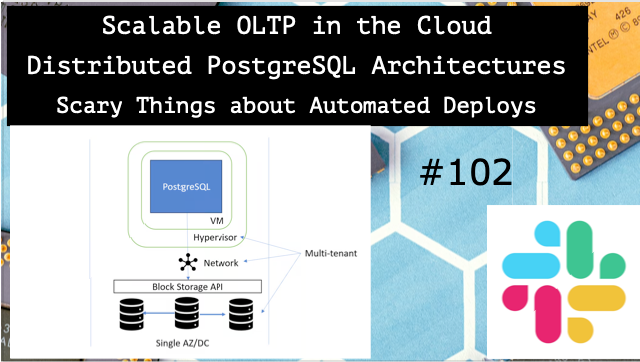Architecture Weekly Issue #102. Articles, books, and playlists on architecture and related topics. Split by sections, highlighted with complexity: 🤟 means hardcore, 👷♂️ is technically applicable right away, 🍼 - is an introduction to the topic or an overview. Now in telegram and Substack as well.
Highlights
Scalable OLTP in the Cloud 🤟
Murat discusses a paper, where it is shown that OLTP databases are not scalable(yeah, Oracle, PostgreSQL and MS SQL) due to the nature of MVCC implementation. The writing and reading transactions require synchronization, and ever read transactions do that as well. The paper includes a DB design which would solve the problems, but relaxing the guarantees is required. Get a cup of strong tea, and be ready for some hard thinking while reading :)
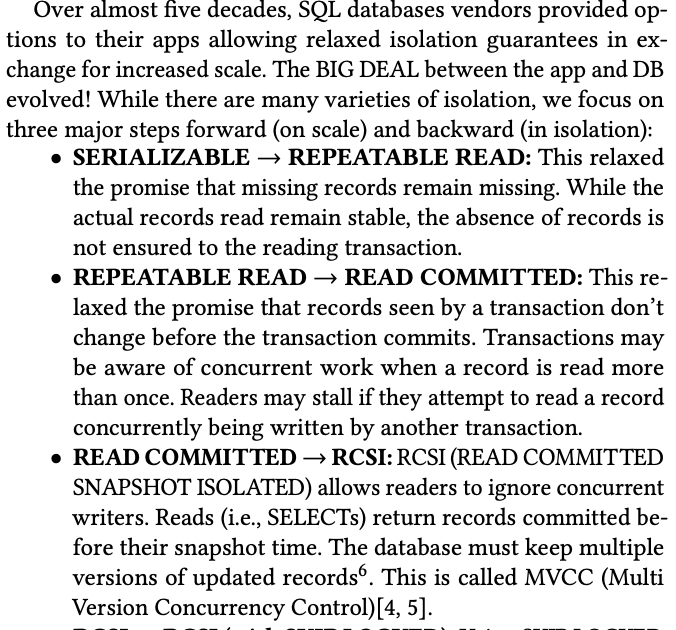
#paper #db #cloud
Overview of Distributed PostgreSQL Architectures 🤟
We talk a lot about distributed databases, but barely talk about why we need them in the first place. In this post you will find a nice explanation why availability and reliability requirements inevitably lead us to such architectures and what options do we have with 5 different variants. 16 minute long-read inside.
#db #distrubutedsystems
The Scary Thing About Automating Deploys 👷♂️
I learned from this article that Slack is using a Monolith and deploying it 30 times a day automatically with the help of their ReleaseBot. But it wasn't always the case, and developers had to guide the deployment step by step. The main problem was understanding if everything goes well. Eventually, they figured it out with the anomaly detection, which led to fully automated deployment. Great stuff!

#sre
Follow-Up
Fallacies of Distributed Computing 🍼
Distributed Systems are hard for various reasons, including the misconceptions or fallacies. Find a series of article which explain the fallacies and their root causes in a lightweight manner and provide advice on how to handle them.

#distributedsystems
5 Ways to Share Code Between Lambda Functions 👷♂️
Serverless adoption is on the rise, and one of the problems while using lambdas is sharing the code between like modules, or common ways to connect to s3, dynamodb and other services. Find an article with 5 different ways of sharing hte code between lambda functions, including absolutely ridiculous ones like storing code on s3 and download it in runtime :)
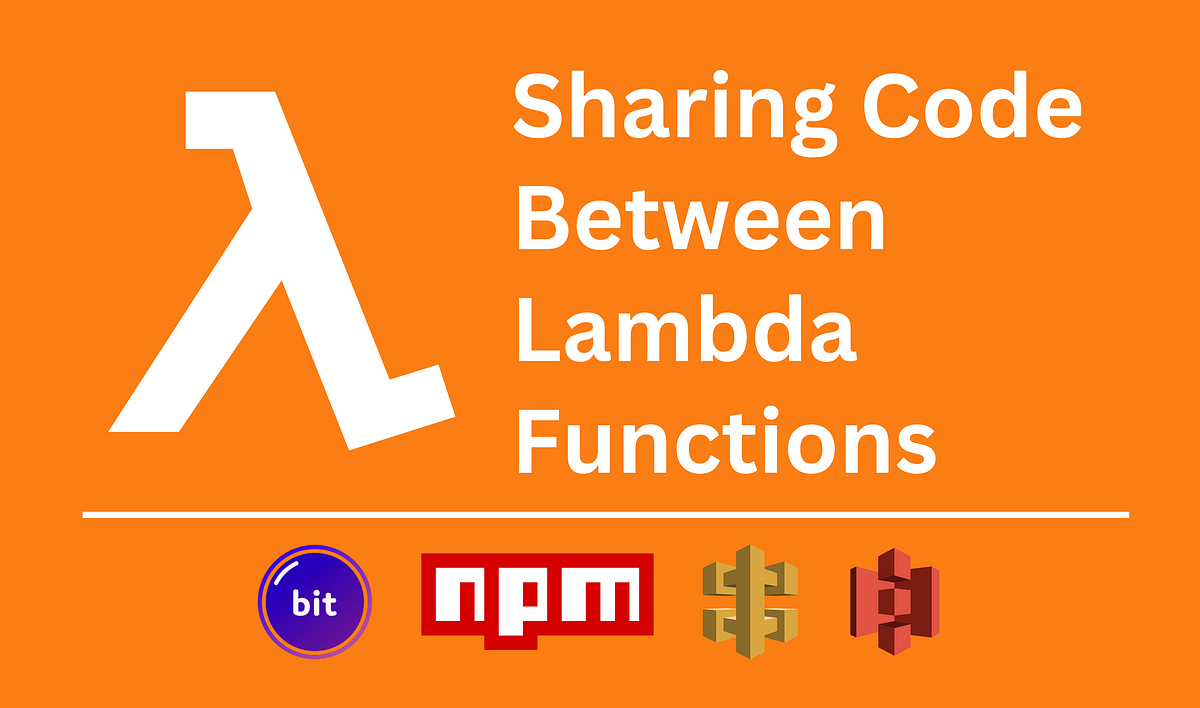
#aws #serverless
Refactoring Legacy Code with the Strangler Fig Pattern 👷♂️
We all faced the situations with God-objects: when a class is handling several responsibilites at once. The refactoring of such object are usually tedious and error-prone. Shopify is telling their approach with the Strangler Fig Pattern. Steps and Diagrams included!
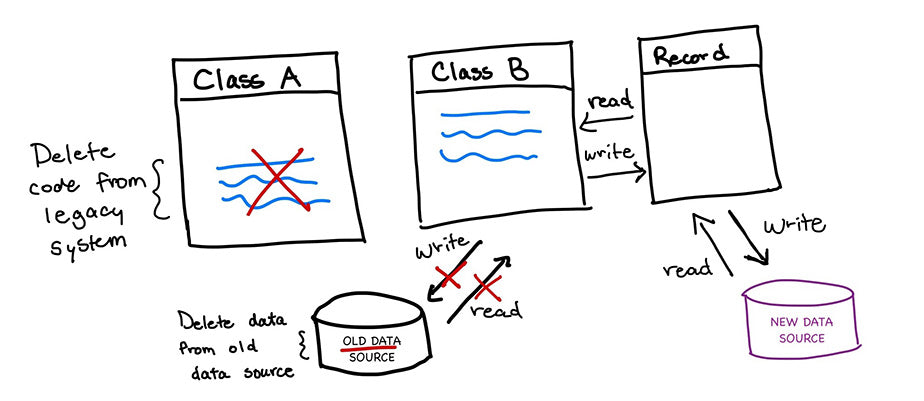
#refactoring
What is Scalability Anyway? 🍼
You can try to give your own definition of scalability, and you may find one by Marc Brooker: "A system is scalable in the range where the cost of adding incremental work is approximately constant". That means you can build a graph of cost for different solutions, which Marc is doing in his post to come to the conclusion that serverless systems ARE actually scalable according to this definition.
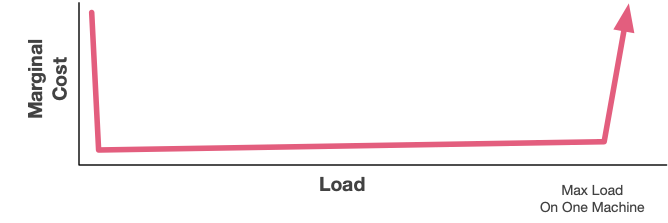
#scalability #serverless
End-to-End Tracing at Canva 🍼
Canva shared the story of implementing e2e tracing in their high-loaded product. Switching to OpenTelemetry, picking up observability provider and solving technical issues with OTEL in Frontend - everything in this blog post!
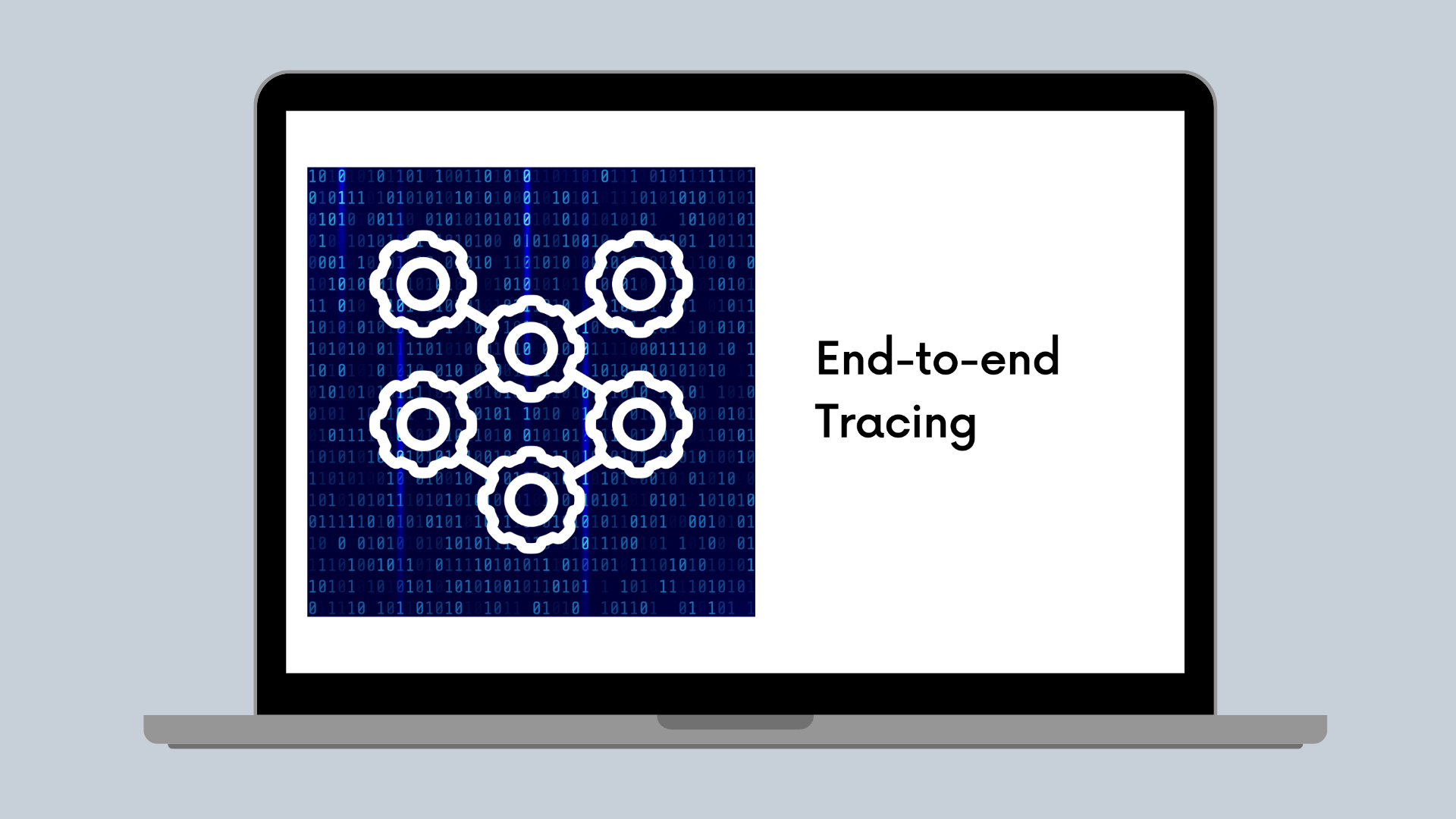
#observability #casestudy
How eBay Export Billion-Scale Graphs on Transactional Graph Databases 👷♂️
There is not much case studies shared on using Graph Databases in the internet, and here is a good piece on how eBay found a nice solution to making queries on the large database. Instead of backup/restore functionality they found that disaster recovery setup works much faster, which allows to have a copy of a transaction graph database for subsequent queries. Tons of details inside.
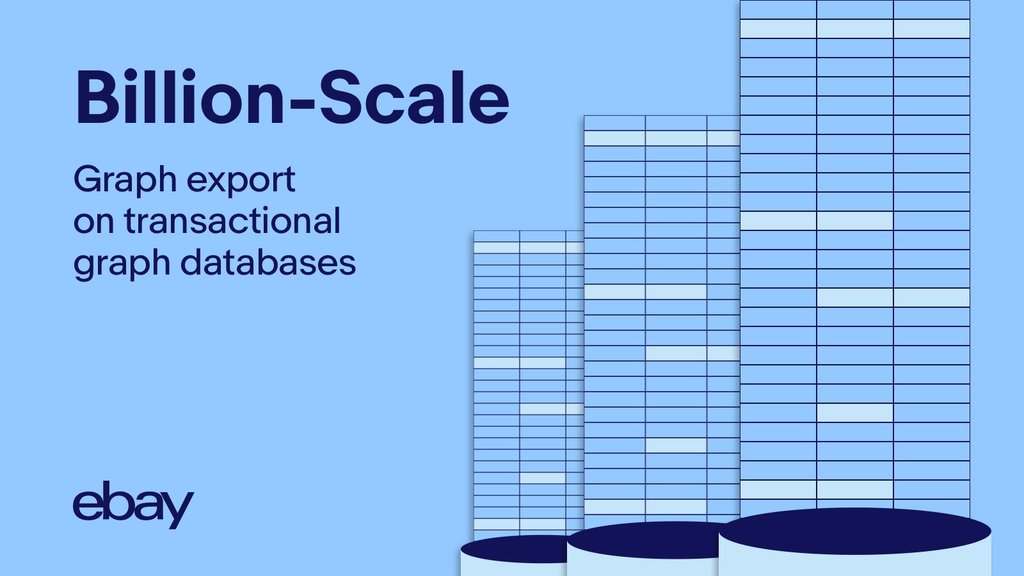
#db #graph #casestudy
WARNING 🇺🇦
The brutal and unjustified war against Ukraine continues. If you want to help Ukraine directly visit this fund.
Big thanks to Nikita, Anatoly, Oleksandr, Dima, Pavel B, Pavel, Robert, Roman, Iyri, Andrey, Lidia, Vladimir, August, Roman, Egor, Roman, Evgeniy, Nadia, Daria, Dzmitry, Mikhail, Nikita and Dmytro for supporting the newsletter. They receive early access to the articles, influence the content and participate in the closed group where we discuss the architecture problems. They also see my daily updates on all the things I am working on. Join them at Patreon or Boosty!

